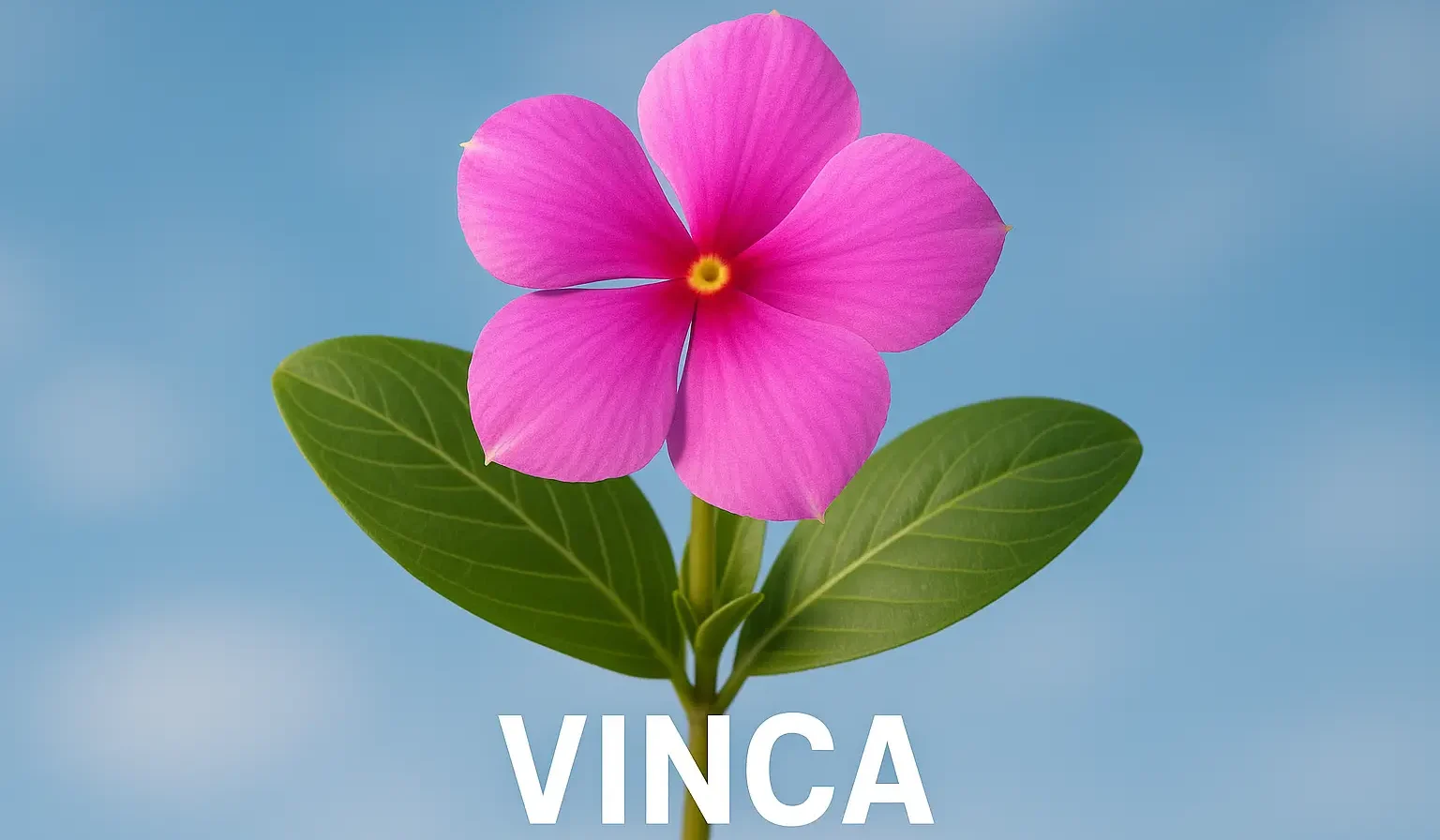General Introduction to Vinca:
- Vinca alkaloids are a group of dimeric indole alkaloids highly regarded for their anticancer properties.
- Initially extracted from the Madagascar periwinkle plant, they are used to treat various cancers by inhibiting mitotic cell division.
Synonyms:
- Common Name: Periwinkle alkaloids
- Scientific Name: Catharanthus roseus alkaloids
- Other Names: Vincristine, Vinblastine, Catharanthus alkaloids
Advertisements
Biological Source:
- Plant: Derived from the leaves of Catharanthus roseus (formerly Vinca rosea).
- Family: Apocynaceae
Composition of Vinca:

Advertisements
- Major Alkaloids: Vincristine, Vinblastine, and semi-synthetic derivatives such as Vindesine and Vinorelbine.
- Structural Units: Consist of indole and dihydroindole units (specifically, Vindoline and Catharanthine linked by an indole-dihydroindole bridge).
Chemistry & Chemical Classes:
- Chemical Class: Indole alkaloids (Tryptophan derivatives)
- Structure: Complex dimeric molecules
- Solubility: Generally hydrophilic; modifications can improve pharmacokinetic properties.
Advertisements
Therapeutic Uses:
-
Vincristine:
- Cancers Treated: Acute lymphoblastic leukemia (ALL), Hodgkin’s lymphoma, neuroblastomas.
- Mechanism: Inhibits microtubule assembly, causing metaphase arrest in mitosis.
-
Vinblastine:
Commercial Applications of Vinca:
- Integral to many chemotherapy regimens.
- Formulations: Marketed as injectable formulations (e.g., vincristine sulfate, vinblastine sulfate).
- Additional Derivatives: Vindesine and Vinorelbine for specific cancer treatments.
Click Here to Watch the Best Pharma Videos
Advertisements

